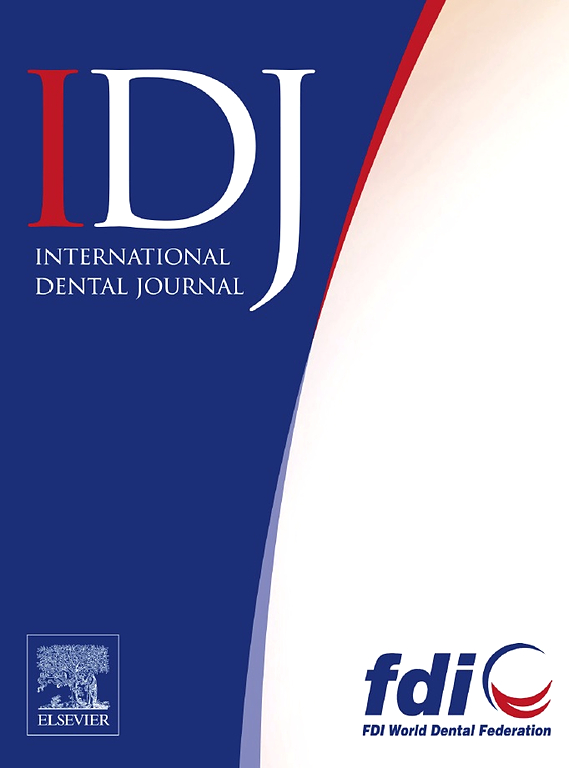ARA290通过SIRT1/NF-κB/IL-1β通路调节缓解根尖牙周炎
IF 3.2
3区 医学
Q1 DENTISTRY, ORAL SURGERY & MEDICINE
引用次数: 0
摘要
现有研究表明,ARA290可能具有治疗根尖牙周炎(AP)的潜力,尽管其机制尚不清楚。本研究旨在探讨ARA290在AP环境下减轻巨噬细胞促炎反应中的保护作用及其机制。方法首先,采用AP的体内模型来评估根尖周围病变中SIRT1/NF-κB/IL-1β信号通路的异常激活。此外,采用免疫组织化学(IHC)、免疫印迹(Western blotting)和免疫荧光(IF)技术评估ARA290处理的AP模型体内和体外SIRT1/NF-κB/IL-1β信号通路的表达水平,以阐明ARA290在AP发病过程中调节该信号通路的作用。随后,使用selisistat抑制SIRT1/NF-κB/IL-1β信号通路,并通过血红素和伊红染色,抗酒石酸酸性磷酸酶染色,免疫组化和显微计算机CT (Micro CT)评估炎症水平和骨吸收的变化。结果体内AP模型显示,在根尖周围病变中SIRT1表达减少50%,同时乙酰化NF-κB (p65)和IL-1β表达增加5倍。此外,在AP小鼠模型中给予ARA290可显著降低炎症浸润、破骨细胞数量和根尖周围区域骨质流失程度。值得注意的是,在体内和体外AP模型中,ARA290治疗使SIRT1表达提高了约40%,同时使乙酰化NF-κB (p65)水平降低了约75%,IL-1β水平降低了约62.5%。重要的是,抑制SIRT1/NF-κB/IL-1β信号通路会使ARA290在减缓ap进展中的有益作用失效。结论sara290通过调节SIRT1/NF-κB/IL-1β信号通路在根尖牙周炎中发挥保护作用,这可能为根尖牙周炎的辅助治疗提供新的方向。本文章由计算机程序翻译,如有差异,请以英文原文为准。
ARA290 Attenuates Apical Periodontitis via SIRT1/NF-κB/IL-1β Pathway Modulation
Introduction and Aims
Existing research suggests that ARA290 may possess therapeutic potential for apical periodontitis (AP), although the mechanisms involved remain unclear. This study aims to investigate the protective effects and underlying mechanisms of ARA290 in mitigating pro-inflammatory responses of macrophages in the context of AP.
Methods
Initially, in vivo models of AP were used to assess the aberrant activation of the SIRT1/NF-κB/IL-1β signalling pathway within periapical lesions. Furthermore, the expression levels of the SIRT1/NF-κB/IL-1β signalling pathway in ARA290-treated AP models, both in vivo and in vitro, were evaluated using immunohistochemistry (IHC), Western blotting, and immunofluorescence (IF) techniques to elucidate the role of ARA290 in modulating this signalling pathway during AP pathogenesis. Subsequently, the SIRT1/NF-κB/IL-1β signalling pathway was inhibited using selisistat, and the resultant changes in inflammatory levels and bone resorption in periapical lesions were assessed through haematoxylin and eosin staining, tartrate-resistant acid phosphatase staining, IHC and micro-computed tomography (Micro CT).
Results
The in vivo AP model demonstrated a 50% reduction in SIRT1 expression within periapical lesions, accompanied by a 5-fold increase in the expression of acetylated NF-κB (p65) and IL-1β. Additionally, the administration of ARA290 in the AP mouse model significantly reduced inflammatory infiltration, the number of osteoclasts and the extent of bone loss in the periapical region. Notably, ARA290 treatment enhanced SIRT1 expression by approximately 40% while concurrently decreasing the levels of acetylated NF-κB (p65) by around 75% and IL-1β by approximately 62.5% in both in vivo and in vitro AP models. Importantly, inhibition of the SIRT1/NF-κB/IL-1β signalling pathway negated the beneficial effects of ARA290 in attenuating the progression of AP.
Conclusions
ARA290 plays a protective role by modulating the SIRT1/NF-κB/IL-1β signalling pathway in apical periodontitis, which may provide a new direction for the adjuvant treatment of apical periodontitis.
求助全文
通过发布文献求助,成功后即可免费获取论文全文。
去求助
来源期刊

International dental journal
医学-牙科与口腔外科
CiteScore
4.80
自引率
6.10%
发文量
159
审稿时长
63 days
期刊介绍:
The International Dental Journal features peer-reviewed, scientific articles relevant to international oral health issues, as well as practical, informative articles aimed at clinicians.
 求助内容:
求助内容: 应助结果提醒方式:
应助结果提醒方式:


